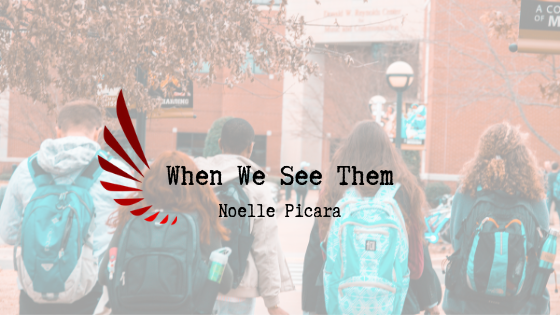This year, at the KIPP School Summit 2019, I had the pleasure to host the “Circle Songs for Social Justice” workshop as well as meet many other like-minded educators and listen to inspirational keynote speakers. One of those keynote speakers was the director of the Netflix miniseries When They See Us, Ava DuVernay. The show is about the 1989 Central Park Jogger case and the “Exonerated Five.” In this case, five Black boys were wrongfully accused of the assault and rape of a 28-year-old white woman in New York. Korey Wise, one of the five black boys, was treated as an adult even though he was only 16 and served 11.5 years in prison for the crime. I won’t go much further into the description and plot of the show, but the story should be a call-to-action for educators.
Many people who have grown up in the United States have an anti-Black implicit bias that they may not be aware of. This bias can manifest itself in many different ways. For me, I find that in some moments, my implicit biases play a role in forming my thoughts about a particular student or situation. As an educator, it is crucial for me to be able to identify my implicit biases and to ensure that I am not making decisions based off of them. Educators, including myself, need to consistently work to counteract our implicit biases of anti-Blackness and see that we are not acting on them to create a lack of equity in the classroom. When researching the series, director Ava DuVernay sifted through all of the documents regarding the case and the history of the boys involved in it. As DuVernay stated in her keynote, she found that her school system had failed him, miserably. Korey was in foster care when he was younger and had a learning disability. Many of the educators took disciplinary action on Korey when he failed to perform well in school. His educators failed to ask a fundamental question to Korey as he was growing up: ‘What happened to you?’ Instead, his teachers would ask him, ‘What did you do?’ Korey was not being groomed for success. Instead, this child was being labeled and discriminated against for problems outside of his control, and the educators were scrutinizing him instead of trying to help.
As stated at the KIPP Summit, “racial justice work is not extracurricular for teachers.” Today, over 75% of teachers in public schools are white women, according to Edweek’s 2017 study. Therefore, in this blog post, my reference to “we” is aimed at white women educators, including myself. When we see “them,” meaning Black male students, what do we see? Your first response to this question may be to cite all of the instances in which you’ve shown love and support for your Black male students, which I’m sure you have. However, I’d like to ask you to take another approach. What if you could do better? Let’s assume that living in a society that promotes anti-Blackness is like walking through heavy grass, and that looking for the unintentional biases you’ve inevitably absorbed is like checking your body for ticks after being in the woods. What if you could be an agent of change and do better by your Black male students? Would you be willing to look, to find these implicit biases, and examine them so you could make better choices in the classroom?
As we can see clearly, white women acting on fear and unconscious bias, such as the detective and prosecutor in DuVernay’s series, can make small decisions that destroy the lives of Black boys forever. As DuVernay said at the KIPP Summit, teachers are the first line of defense for these boys, because often their environment at school directly translates to a life of success or imprisonment. We need to be extremely aware of our biases and think about how we can positively affect the lives of our Black male students. As narration in the show states, “when they say ‘boys will be boys,’ they’re not talking about us. They’re talking about other boys from other places. When did we ever get to be boys?” There is a long history of Black boys who suffer the consequences for something that was done to white women, even fabricated stories such as in the cases of the Exonerated Five and the historic case of Emmett Till. Understanding that and concepts like the school-to-prison pipeline will make us understand that unless we make conscious and informed decisions, we will unconsciously create a negative impact for Black boys in our schools and education at large.
The series When They See Us is a wonderful example of how we can understand the point of view of people who have experienced life-altering discrimination in our society. DuVernay does a fantastic job with camera angles, lighting, music, and other aspects of the series to portray the pain and suffering the boys go through, from the perspectives of them and their families. Especially noteworthy are the descriptions of violent acts towards the white woman victim in the audio, while the camera shows images of the frightened wrongly accused boys in tears, with heads in the laps of their mothers and grandmothers, so that our national viewpoint of empathy for white women as victims can shift to empathy for Black boys as victims of institutional discrimination. Art has a profound way of affecting us as human beings, and DuVernay has painted a complete picture of just how devastating implicit biases can be towards children when we do not counteract them.

